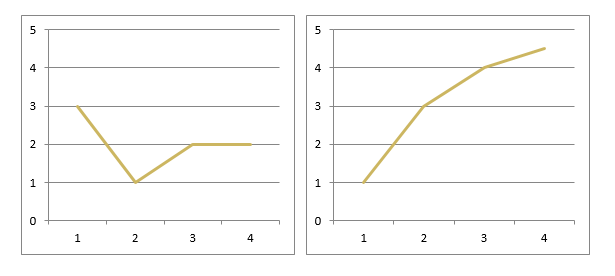Step 1.4 Collect baseline data
Once the behavior (or skill) and activities and routines are identified, the team and family collect data on that behavior within those activities or routines. This will determine how often the toddler uses the target behavior, if at all.
If an accurate baseline is not established the EI team is unlikely to develop appropriate goals and criteria by which to measure progress. Further, the EI team is unlikely to be able to make the right adjustments to the implementation of reinforcement and other evidence-based practice necessary to support the toddler and family’s success.
a) The EI team, with the family, measure the toddler’s use of the skill or behavior
Review the criteria written into the IFSP outcome to identify what type of data to collect. These types of data might include the following:
Frequency Data. Frequency data measure how often the toddler engages in the skill/behavior. Data are collected through time sampling or event sampling.
When using time sampling, data are collected after a certain amount of time has passed (e.g. every 5 minutes). For example, if collecting data on frequency of screaming behavior a parent or provider would mark if the behavior happened every 5 minutes. This technique is useful for behaviors the toddler engages in frequently such as for engagement and parallel play. For Jonathan, the team could take data every 3 minutes on whether he was engaging in play within the target distance from his sister.
Event sampling is used by marking every time that the toddler engages in the skill/behavior. This technique is used for low frequency behaviors or skills such as requesting help, playing specifically with a toy, helping put on clothes, and so on. For Jonathan, the team could mark down every time he engaged directly with his sister during play.
Data: How frequently Jack requests for more snack during snack time by signing “more”, pointing to the food, or approximating the food (“cracker”)
|
Date |
# of Requests |
Total |
|---|---|---|
|
9/17/2012 |
X |
1 |
|
9/18/2012 |
X |
1 |
|
9/19/2012 |
XXX |
3 |
|
9/20/2012 |
XXXX |
4 |
Duration data. Duration data are used to record the length of time that the toddler engages in the skill/behavior. For example, a parent or provider might collect data on how long a toddler sits at the table during dinner before demanding to be let down. A parent or provider might collect data on how long the toddler spends playing with one open-ended toy before moving on to something else. For Jonathan, the team could take data on how long he engages in parallel play with his sister.
Data Table: Length of time Caroline spends in bath before demanding to be taken out
|
Date |
Start Time |
End Time |
Total Time |
Which Bathroom Used |
|---|---|---|---|---|
|
7/4/12 |
7:18 |
7:21 |
3 |
Guest |
|
7/5/12 |
6:55 |
6:59 |
4 |
Guest |
|
7/7/12 |
7:02 |
7:07 |
5 |
Master |
|
7/8/12 |
7:22 |
7:24 |
2 |
Guest |
b) EI team members collect baseline data for a minimum of four days or until a trend is clear and stable before beginning implementation of reinforcement.
If the baseline is not stable, the team will not know whether it was the implementation of reinforcement that produced a change in the toddler’s behavior or use of a skill. A stable baseline helps the team know whether their use of reinforcement is impacting the toddler’s behavior.
Baseline data should be graphed in order to best determine if a trend is stable such as in the following graphs. In both of the graphs below a stable trend can be identified. While the graph on the left is more erratic, it is clear that the frequency or duration of the behavior is at the level of a 2 and that the level is overall flat. The graph on the right clearly slows an increasing trend. Generally, at least 3 data points are needed to begin to identify a trend.



